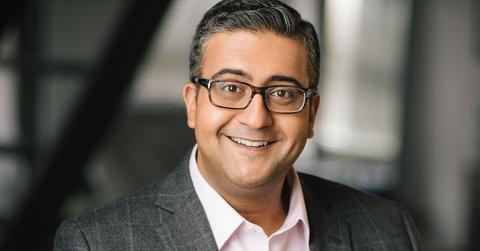
Dr. Pirani and the Art of Natural Transformation
In a city where cosmetic enhancement has become as common as a new haircut, Dr. Asif Pirani stands out not for radical transformations, but for his steadfast dedication to subtlety. At his Toronto Plastic Surgery Center, he takes a boutique, individualized approach that’s refreshingly devoid of flash. “All we do is cosmetics,” he says matter-of-factly. “We have a medical spa that does lasers and facials, and on my side, we handle injectables and surgical treatments. I do everything from head to toe—except Brazilian butt lifts.”
For years, Pirani’s reputation has been built on meticulous breast and body work, but the tide is shifting. “I’m kind of bored of the breast and body stuff,” he admits with a wry laugh. “Facelifts are having their heyday right now. Celebrities are open about it, and people are realizing these procedures can look natural. That’s where my interest is growing.”
A surprising trend has emerged in recent years, one that Pirani didn’t expect to dominate his practice: patients seeking surgery after dramatic weight loss from drugs like Ozempic. “They come in with loose skin everywhere,” he explains. “They thought they were getting healthier and would look better, but they didn’t realize the skin doesn’t always bounce back. We’re seeing everything from face and neck lifts to tummy tucks and even labial rejuvenation because of deflation from weight loss. It’s been eye-opening.”
These patients, he adds, often arrive seeking restoration rather than transformation. “It’s about helping them feel like themselves again—just more comfortable in their own skin.”

For Pirani, plastic surgery has always been as much psychological as physical. “People don’t need these surgeries to live,” he says. “They do it so they can stand taller in their own skin. Understanding their motivation is crucial. If their expectations don’t align with what’s achievable, it’s a recipe for disaster.” He’s quick to turn away patients whose goals are driven by external pressure or who show signs of body dysmorphia. “I’ll never operate on someone who’s doing it because their spouse told them to. The motivation has to come from within.”
This psychological sensitivity may stem from his unconventional entry into the field. “I was planning to be a cardiologist,” he recalls. “Then during a rotation, a plastic surgeon said, ‘You have a knack for this.’ I laughed it off—but the more I did it, the more I realized how right they were. It didn’t feel like a chore. I enjoyed every minute of it.”
In the era of filters, influencers, and public confessions, Pirani has watched the stigma around cosmetic surgery dissolve. “Although I hate saying it, it’s the Kardashians,” he concedes. “When Kylie came out talking about her breast augmentation, I made a video explaining what she meant by ‘half under the muscle.’ It’s called dual-plane augmentation, and I’ve been doing it for 15 years. That video hit over a million views. Suddenly, we were getting calls from all over the world.”
It’s a perfect example of how celebrity culture drives trends more powerfully than medical expertise. “You do all this training, publish, educate—but all it takes is a Kardashian to mention it and the phones light up,” he says, amused but resigned.
While his clientele remains overwhelmingly female, Pirani notes that men are slowly but steadily entering the fold. “It used to be 98 percent women. Now it’s closer to 95,” he says. “And it’s mostly older men—high-level executives—who feel pressure to look youthful. They may not say it out loud, but they’re feeling it.”
The cultural shift toward openness has helped. “Plastic surgery used to be something you hid. Now it’s discussed openly at dinner parties. People don’t whisper about their fillers or lifts anymore—they trade surgeon recommendations.”
If there’s a unifying thread to Pirani’s philosophy, it’s restraint. “The trend now is less is more,” he says. “People are dissolving filler and coming back to a more natural look. I’ve always believed in respecting anatomy—enhancing it, not deforming it. For a while, surgery became a status symbol—big lips, exaggerated proportions. It was like the Louis Vuitton handbag of beauty. But the pendulum’s swinging back. Now it’s about confidence, not display.”
At The Toronto Plastic Surgery Center, that ethos manifests in everything from the scheduling—patients are never double-booked—to the detailed consultations where Pirani studies each face and body like an artist approaching a canvas. “Every patient is unique,” he emphasizes. “There’s no cookie-cutter formula for beauty.”
Pirani’s curiosity extends beyond scalpels and sutures. “I’m really excited about exosomes and what we call secretomes—looking at cellular components from your own body that can be amplified and reinjected to stimulate collagen and elastin,” he says. “Right now, it’s early, even risky—we don’t fully understand what we’re injecting. But once we isolate the factors that promote healthy regeneration without triggering harmful cells, it’ll revolutionize anti-aging.”
In the end, Pirani’s approach feels almost old-fashioned in its restraint. “When I trained, plastic surgery was supposed to be invisible,” he reflects. “You made people look better without anyone knowing why. For a while, people flaunted their surgery as proof of wealth. But now, thankfully, it’s coming back to where it belongs—about feeling good, not showing off.”
That quiet confidence defines both the surgeon and his practice. “Beauty isn’t about changing who you are,” he says. “It’s about refining what’s already there.”
At The Toronto Plastic Surgery Center, that philosophy is more than branding—it’s the foundation of every procedure, every consultation, every result that lets a patient stand just a little taller in their own skin.
